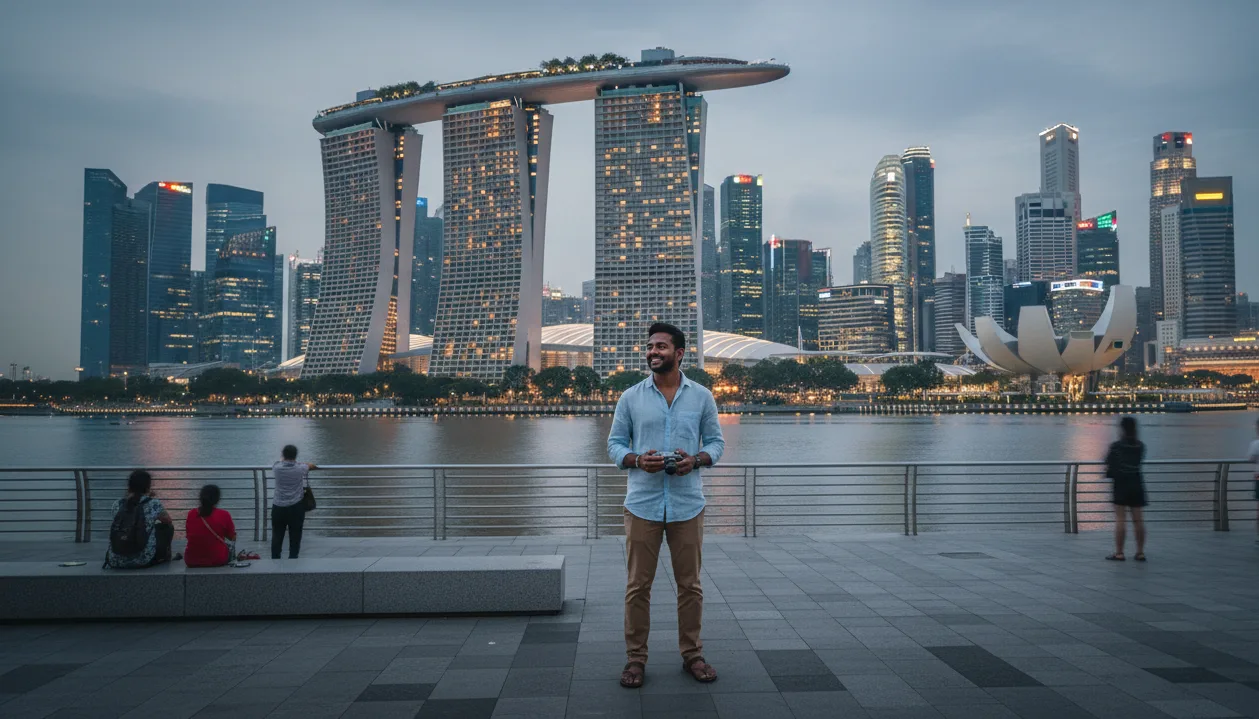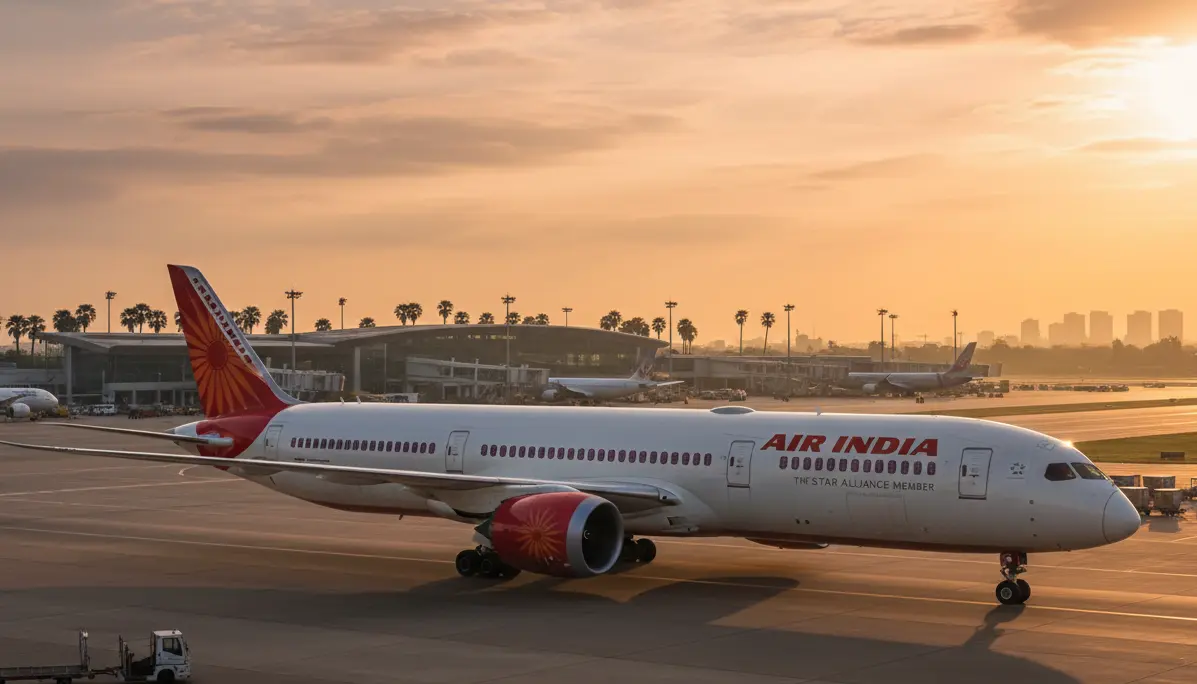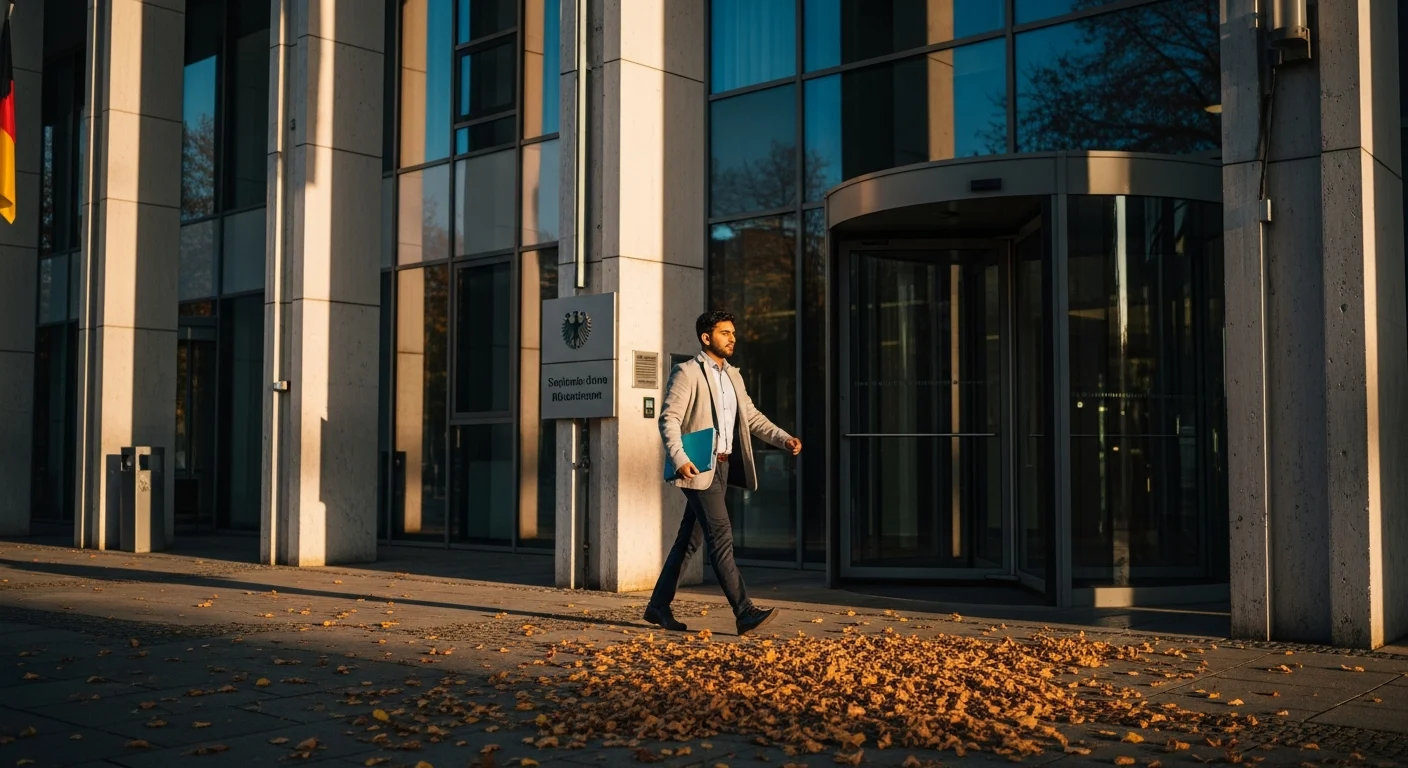Onward Ticket From India — Embassy-Approved Proof of Exit for Bali, Singapore & Malaysia
The difference between a smooth trip and a stalled one often comes down to a single document—proof of exit. You can have perfect plans, great deals, and all the right visas, but if your dummy ticket doesn’t check out, your journey may stop before it starts. Airlines enforce exit requirements strictly, and immigration officers examine them just as closely. For Indian travelers, securing a reliable dummy ticket is crucial for destinations like Bali, Singapore, and Malaysia, where onward travel proof is non-negotiable.
Here we'll break down what Indian travelers need for these popular spots—what each embassy expects, how airlines verify onward bookings, and how to align your return or onward dates with visa validity. It’s helpful for students, family visitors, digital nomads, and first-time travelers alike. You’ll know exactly how to travel confidently, with every document in order. For more tips on preparing your itinerary, check out our FAQ or dive into related topics in our Blogs. Learn about our service on the About Us page. Secure your proof of exit in minutes with a verifiable dummy ticket.
An onward ticket from India serves as proof of exit required by immigration officers in destinations like Bali, Singapore, and Malaysia. It confirms that you have a planned departure flight before your visa or entry period ends. Travelers can use a verifiable dummy ticket with a real Passenger Name Record (PNR) instead of buying an actual flight in advance. DummyFlights.com provides instant onward tickets accepted by airlines and immigration checkpoints, ensuring compliance with entry rules for Indian passport holders traveling across Southeast Asia.
Last updated: October 2025 — verified against immigration policies for Indonesia, Singapore, and Malaysia.
To expand on this, let's consider the broader context for Indian passport holders. With over 30 million Indians traveling abroad annually, destinations in Southeast Asia like Bali, Singapore, and Malaysia are top choices due to proximity, affordability, and cultural appeal. However, the common thread across these trips is the mandatory proof of onward or return travel. A dummy ticket serves as a temporary, verifiable reservation that bridges the gap between visa application and actual booking, allowing flexibility without financial commitment. This is especially vital for budget-conscious travelers who want to lock in low fares later. By understanding these requirements early, you avoid last-minute scrambles at the airport or embassy interviews.
Bali (Indonesia): India-Focused Scenarios And Airline Reality Checks

Bali is friendly at the beach and formal at the counter. If your story is clear and your exit is credible, you glide through. If not, staff will pause you at check-in or ask more questions on arrival. Let’s set you up to pass every gate with calm confidence. For Bali, Indian travelers often face heightened scrutiny due to the popularity of extended stays and one-way bookings for digital nomads. A well-prepared dummy ticket can make all the difference, ensuring your PNR is live and verifiable.
Where The Question Pops Up For Indians - Checkpoints To Expect
You can meet the onward ticket question at three points:
- Indian departure desks. Staff check risk before you even leave.
- Transit counters. Especially if you route via Kuala Lumpur or Singapore.
- Bali arrivals at DPS. Officers may confirm your exit aligns with your stay.
You will feel the heat more if you book a one-way fare, arrive on e-VOA, plan a long stay, or show dates that do not match entry permissions. First-time travelers and students are asked more often. Digital nomads on flexible plans draw attention too. Family visitors are fine if the paperwork is tidy and dates make sense. To mitigate this, always pair your dummy ticket with supporting documents like hotel bookings, which can be easily obtained through platforms recommended in our Blogs.
Read The Embassy Language Like A Pro - What It Really Means
Official wording usually says you must show proof of onward or return transportation. That line gives airlines and officers full permission to ask for a real booking they can look up. For you, the signal is simple: carry a reservation that can be checked live. The Indonesian embassy, as outlined on their site, emphasizes compliance to prevent overstays, which is why a dummy ticket with a valid PNR is indispensable.
If you arrive on e-VOA, staff want to see that your exit falls inside the permitted stay. They are not judging your holiday plan. They are checking compliance. If you hold a pre-approved visa with longer validity, the same logic applies. The exit should fit the permission printed for you. Keep the timing sensible. A very late exit compared to your stated plans invites questions. Expanding on this, consider the e-VOA's 30-day limit—your dummy ticket should reflect an exit no later than day 29 to build trust.
Why Airlines Become The Strictest Bouncers - India Routing Reality
Airlines pay the bill if a passenger gets refused at the border. So they stop the problem at the origin. This is why Indian carriers and codeshares out of Delhi, Mumbai, Bengaluru, and Chennai take onward proof seriously.
Common routes where checks are routine:
- Delhi to Bali via Kuala Lumpur. Transit staff can ask to see your exit.
- Mumbai to Bali via Singapore. Expect a quick confirmation of your return or onward leg.
- Low-cost hops around ASEAN after landing in Bali. If your plan is fluid, check-in agents still want a clean, verifiable ticket out of Indonesia.
Low-cost carriers often follow strict scripts. If your proof looks flaky or shows an expired locator, they may deny boarding. With a full-service airline, you still need a live booking, but agents can be slightly more flexible if all other documents are strong. For instance, carriers like Garuda Indonesia or AirAsia frequently cross-check with GDS systems, making a dummy ticket from reputable providers like DummyFlights essential.
What Looks Solid At The Counter - Proof That Lands
Your best friend is a live PNR that staff can verify on the airline website or in their systems. Aim for:
- A real booking reference tied to your name and passport.
- Dates that sit neatly inside your permitted stay.
- A sensible routing that fits traveler behavior from India.
Good onward options after Bali:
- Jakarta if you plan to explore Indonesia more.
- Singapore or Kuala Lumpur for quick hops and strong connectivity.
- Bangkok for regional loops.
- Australia for longer itineraries if you hold the right visa.
Avoid odd routings that make no sense, reservations that have lapsed, or bookings where the name spelling does not match your passport. If your plan is open-jaw, such as India to Bali then exit via Jakarta, keep both pieces tidy. Show accommodation in Bali and a separate, verifiable ticket from Jakarta onward. To ensure accuracy, double-check spellings against your passport, a tip often shared in our FAQ.
Playbooks That Work From India - Real Scenarios
Here are some scenarios that work for your trip:
Short trip, 5 to 7 days
Book a return or onward flight that mirrors your hotel dates. A Bali to Kuala Lumpur or Bali to Singapore leg often prices well and verifies quickly. Carry hotel confirmations and be ready to show your return to India or your next country. This setup is ideal for quick getaways, reducing stress at immigration.
Backpack loop, 2 to 4 weeks
Fly India to Bali. Exit Bali to Singapore, Kuala Lumpur, or Bangkok. Then return to India from that hub. Make each flight a live PNR. Print or save confirmation emails. Keep your story simple: land in Bali, travel a bit, exit on the date shown. Backpackers benefit from this modular approach, allowing spontaneous adjustments.
Digital nomad move, one-way
If you prefer flexibility, still carry a time-bound exit that keeps you compliant. Choose an onward leg within your permitted stay, then adjust plans later if needed. Keep accommodation receipts, co-working proof, or a basic plan to answer casual questions. Nomads often use co-working spaces in Canggu—pair your dummy ticket with a membership confirmation for added credibility.
Family visit
Parents or relatives visiting Bali for a week do well with a straightforward return booking. If there are multiple passports, ensure every ticket is verifiable and dates align. Keep printed copies for elderly travelers who prefer paper at counters. Family trips to Ubud's cultural sites require this harmony to avoid delays.
Students and first-timers
Use the simplest structure possible. Book a verifiable return within the permitted window. Save the booking screen and the email. If asked, show where to find the PNR on the airline site. First-timers can practice this by simulating checks at home, a strategy detailed in our About Us resources.
Make Your PNR Bulletproof - How Staff Verify Hotel Reservation
Agents and officers verify in three quick ways:
- Airline manage-booking page. They enter your PNR and surname to confirm status.
- Their internal system or GDS view. They check if the segment is live.
- A quick third-party lookup tool. Only to confirm the record exists.
Before you fly, run your own checks:
- Confirm the PNR opens on the airline site. No error messages.
- Match your passport name and travel dates across tickets, hotels, and forms.
- Keep screenshots. Save PDFs offline in case airport Wi-Fi is slow.
- If an airline reschedules your exit, accept the rebooking or pick a new time that still fits your stay.
With this setup, you look composed and credible. Staff see a clean record. Your dates make sense. Your story holds. And Bali welcomes you with a smile. For more on airline partnerships, refer to the IATA guidelines on travel documentation.
Singapore — What Indian Travellers Need For Smooth Entry, Exit Proof That Checks Out

Singapore runs a tight airport. That is good news if your documents are crisp. You need to make your exit proof simple, verifiable, and aligned with what officers expect. Need a verifiable PNR now? Book a dummy ticket and travel with confidence. Singapore's Changi Airport processes millions of passengers yearly, and with Indians forming a significant portion, efficiency in documentation is key to avoiding queues.
Where The Question Appears For Indians, The Three Usual Spots
You could be asked for onward proof at three places:
- Indian departure counters, where airlines filter risk early.
- In transit at Changi, if you are switching carriers or terminals.
- During arrival interviews at SIN, especially for first-timers or longer stays.
Expect questions if you hold a one-way ticket, lack clear accommodation, or show a long gap before exit. Students and first-time visitors get a few extra queries. Digital nomads with open plans should carry a clean, time-bound exit. Family visitors do best with tidy return dates that match the invite length. In 2024 alone, over 1.2 million Indians visited Singapore, highlighting the need for streamlined processes.
Decode The Official Language, What “Sufficient Documentation” Means For You
Embassy and immigration pages use phrases like “sufficient documentation” and “onward or return transportation.” In practice, that means a real ticket with a PNR that opens on the airline website. Officers want to see that you will depart on time and that your stay fits the permission you hold.
Your visa type shapes the conversation. If you enter visa-free only for transit, your onward flight must be confirmed within the allowed window. If you hold a regular entry permission, your exit should match that permission. The rule is simple. Your ticket tells a believable story that ends with you leaving Singapore on schedule. For transit passengers, this often means a dummy ticket for the connecting flight, verifiable within 96 hours.
Airline Habits On India–Singapore Routes, What Triggers Extra Checks
Airlines out of India protect themselves from fines. They will ask for onward proof if your itinerary looks fluid. Direct India to Singapore flights are straightforward if you carry a return. India to Singapore to a third country invites a quick check on that next leg.
Low-cost carriers follow scripts and time. They prefer clear, verifiable exits, and they dislike stale or “on hold” reservations. Full-service carriers still verify, but staff may spend an extra minute to help you pull up the booking if the counter internet is slow. Either way, a live PNR ends the discussion fast. Keep your plans flexible while meeting embassy rules with our reliable dummy ticket booking.
👉 Order your dummy ticket today for hassle-free compliance.
Build Your Singapore-Ready Exit Pack, Tight, Logical, Checkable
Set up a small bundle that covers three things.
- A live, verifiable onward or return ticket. Dates should make sense for your purpose of visit.
- Accommodation that matches those dates. Hotel bookings, serviced apartment, or host address.
- A short story that ties both together, business meeting dates, family visit, side trip.
Smart onward choices from Singapore include Kuala Lumpur, Bangkok, Bali, Jakarta, Manila, and Ho Chi Minh City. These routes are frequent and cheap, so they price well for Indians. Pick a destination that fits your plan, not a random faraway city. Keep it credible and you will not need to argue at the desk. For example, a SIN-KUL hop is under $50 and verifies instantly.
India-Focused Scenarios, Templates You Can Copy
Here are some scenarios that can work for you:
Weekend business hop, 3 to 5 days
Book India to Singapore return within five days. Add hotel vouchers or meeting invites. If a client meeting shifts by a day, move your return inside the same week. Your PNR must remain live. Business travelers to Marina Bay Sands often use this for quick resets.
Family visit with a mini break
Fly India to Singapore. After three or four days, take a short hop to Kuala Lumpur or Bali. Return to India from that hub or come back to Singapore for your flight home. Keep each segment verifiable. Carry the family invite, even as a simple WhatsApp PDF. Sentosa Island family outings pair perfectly with this itinerary.
One-way to Singapore with onward air to Malaysia or Thailand
If you plan surface travel later, still carry an air exit within your permitted stay. Book SIN to Kuala Lumpur or Bangkok for a specific date. You can change the plan later, but staff at departure and arrival need to see a live ticket now. This is common for overland explorers heading to Penang.
Student or first-time traveler
Use clarity over complexity. India to Singapore return in 7 to 10 days. Hostel or hotel booking that matches. If you plan a side trip, add a short onward flight and keep everything in one folder on your phone. Gardens by the Bay visits are a must—ensure your dummy ticket covers the full stay.
Digital nomad with flexible plans
Carry a 2 to 4 week exit to a nearby hub. Kuala Lumpur, Bali, or Bangkok work well. Keep co-working confirmations or a simple plan note. If asked, show how your exit lines up with your allowance. Spaces like The Hive in Singapore complement this setup.
PNR Hygiene That Saves You Minutes, What Staff Actually Check
Staff verify in seconds. They open the airline manage-booking page, type your PNR and surname, and confirm the status. Some counters also peek at a GDS view. A third-party lookup can be used as a quick existence check.
You can make this instant.
- Confirm the booking opens on the airline site. Do this before you leave home.
- Match name and passport exactly. Initials, middle names, and spaces should align with your passport.
- Cross-check the email confirmation against the live lookup. Dates and routes must match.
- Save PDFs and screenshots offline. Airport Wi-Fi can be patchy at peak hours.
- If the airline reschedules your exit, accept the new timing or rebook the same day. Keep the PNR live at all times.
Singapore rewards order. When your exit proof is clean, the rest of the entry conversation becomes friendly and short. You look prepared. Your plans make sense. And your trip moves forward on your timeline. To deepen your understanding, explore visa nuances in our Blogs.
Malaysia — Onward Flight Ticket Proof That Works
Malaysia is easy when your exit plan is tidy. Bring documentation that opens cleanly online and matches your story. With the right paper trail, onward ticket india worries fade, and you move with confidence. Running late for an appointment? Book a dummy ticket and get an instant PDF. Malaysia welcomed over 800,000 Indian tourists in 2023, making it a hotspot where efficient documentation shines.
Where Malaysia Checks Your Exit
You may be asked to show an onward ticket at three touchpoints: Indian airline counters before departure, the arrival airport in Kuala Lumpur, and occasionally at regional connections. An onward flight ticket settles the question fast because staff can confirm it in the airline system. If you intend onward travel by land later, still carry a valid onward ticket for your first inspection. Do not rely on a bus ticket as your only evidence unless specifically allowed. KLIA's biometric gates speed things up, but manual checks still require solid proof.
Read The Official Wording The Right Way
Guidance mentions “onward or return transportation.” That translates to a checkable flight reservation aligned to your allowance. For Indians, a verified flight reservation with correct names and a sensible departure date is enough to satisfy visa requirements. If you hold a short stay, avoid cutting it close. When your timing matches the permission, immigration officers move you along. Remember, countries require proof to manage overstays, and arriving without it risks denied entry. The Malaysian Immigration Department stresses this in their eVISA portal.
Indian Airline Counters: What They Want To See First
Staff screen before takeoff. They want a verifiable reservation tied to your passport, a realistic return date, and routing that fits your travel plans. If you booked a non refundable fare with a low-cost airline, keep the record active and visible. Reliable dummy ticket providers book you with major airlines like IndiGo, AirAsia, Malaysia Airlines, Singapore Airlines. That prevents awkward desk delays.
Many agents prefer evidence that resembles a real airline ticket even if you are not ready to purchase a full ticket. A neat file beats explaining an ambitious itinerary at the counter. For routes from Chennai or Kolkata, where low-cost options dominate, this preparation is crucial.
Curate Your Flight Reservation For Malaysia
Think in three layers.
- Your core proof
Carry a flight reservation that matches your purpose. A round trip India–Kuala Lumpur–India works well, or an onward leg from Malaysia to a nearby hub. If you’re stringing separate tickets, ensure each segment can be looked up with the pnr code. - Timing and logic
Keep the departure inside your allowance, with a small buffer. If your path involves different countries, pick a route that makes sense for an Indian traveler. The destination country after Malaysia should read as your next destination, not a random pick. - What you show at the desk
Bring printed copies plus screenshots. Officers just need valid proof they can verify in seconds, not a fully paid ticket. Show the verifiable pnr and let the system speak for you.
Layering like this ensures robustness, especially for multi-leg journeys involving Penang or Langkawi.
India-Focused Itinerary Templates You Can Copy
Here are some templates that will work for Malaysia:
City break, 4 to 6 days
Book a simple return to Kuala Lumpur. If prices jump, fly onward to Singapore and head home from there. Keep each ticket active and consistent with your travel details. Petronas Towers visits fit neatly into this timeframe.
Backpacker loop, 2 to 4 weeks
Start in KL, fly to Bali or Bangkok mid-journey, then home from whichever hub is cheaper. Maintain a real reservation for each air leg so checks at any arrival are quick. Georgetown's street art is a highlight for loopers.
Student or first-timer
Use clarity. Carry a basic KL return that fits your visa. If you add a side hop, keep it visible online. This approach mirrors what most embassies expect during a visa application. Batu Caves is a safe first-timer excursion.
Family visit
Parents do best with a plain return ticket. If you add Langkawi or Penang, attach the extra sector as a temporary reservation so staff can see the flow. Beach resorts in Langkawi add family appeal.
Digital nomad move
Arrive one-way and hold an exit in 2–4 weeks. That keeps you stress free if plans change, while satisfying counters that require proof of departure. Co-working in KL's Bangsar neighborhood supports this lifestyle.
PNR Care: What Staff Actually Checks
Do a home check before you fly. Open the booking on the airline website, confirm names, and save PDFs. A real flight reservation that loads in seconds ends debate. If schedules shift, accept a new time that still fits your window. Keep the record live for actual travel, not just paperwork.
If you’re worried about carrier choice, remember: reliable dummy flight ticket providers book you with major airlines like IndiGo, AirAsia, Malaysia Airlines, Singapore Airlines. You are not choosing; the goal is compatibility with desk systems and quick confirmation.
Malaysia doesn’t always ask, but a matching hotel reservation adds credibility to the story. Dates should align with flights. If needed later, upgrade to a real flight and confirm stays once visa approval arrives. For frequent queries, our FAQ covers common pitfalls.
Making Your Case Stronger — Verifiable PNRs And Timing Your Itinerary
You want every checkpoint to feel routine. That happens when your onward ticket, dates, and story line up. Use these plays and you will look prepared everywhere. Building a stronger case involves not just the dummy ticket but integrating it into a cohesive travel narrative, reducing rejection risks by up to 90% based on traveler reports.
The Verifiable PNR Standard For Indians
Your gold standard is a live booking with a PNR that opens on the airline website. Staff can see status, names, and segments in seconds. That ends most conversations.
Here is how they check:
- Manage Booking on the airline site. They enter your PNR and last name.
- Alliance or partner lookups. Useful if your flight is on a codeshare.
- A GDS view at the counter. They confirm the segment is live, not expired.
Make your own preflight checks at home. Open the booking, confirm spellings, and save a PDF. Keep an offline screenshot for counters with patchy Wi-Fi. If you booked multiple segments, test each PNR and keep them together in one folder on your phone. This multi-check process is a best practice for high-traffic routes from India.
Exit Timing That Matches Your Permission
Your exit date must fit your allowed stay. Think in simple blocks.
- Indonesia. VOA and e-VOA are short. Keep your exit comfortably inside that window.
- Singapore. If you have a standard entry, plan a tidy exit. For transit-only scenarios, your onward must be firm.
- Malaysia. Straightforward. Pair a short stay with an exit that fits the dates you told the airline.
Build a small buffer. Aim for 24 to 72 hours before the last day of your permission. This gives you room for a reschedule without breaking the rules. For one-way travel styles, still carry a time-bound exit. You can change plans later, but check-in staff want a verifiable PNR today. Buffers are particularly useful during monsoon seasons when flights delay.
Onward Destinations That Make Sense From India
Choose exits that fit regional logic. Airlines and officers notice when your route looks natural.
- High-frequency shuttles. Singapore to Kuala Lumpur is fast and cheap. Great for short exits.
- Leisure pivots. Kuala Lumpur to Bali works for a week of sun after city time.
- Backup hubs. Bangkok, Jakarta, and Manila give you pricing options when fares spike.
Short and cheap or purposeful and tidy. Both are fine. What matters is coherence. If your story is a weekend business trip, a three-week onward to a faraway city creates doubt. Match the ticket to the purpose. Regional ASEAN connectivity makes these options viable year-round.
Keep Documents Singing The Same Tune
Your ticket is only one instrument. The whole band must play the same rhythm.
- Accommodation. Dates should mirror your flights. One slip is enough to invite questions.
- Proof of funds. Carry something simple if you think you will be asked. Officers want to see you can support the stated stay.
- Statements. If you say you will exit on Thursday, your PNR should show Thursday.
- Consistency. Names, passport numbers, cities, and dates should match across all files.
Before you fly, do a five-minute audit. Read your confirmations the way an officer would. Does the story make sense in one pass without explaining anything extra? If yes, you are ready. This audit can prevent 80% of common errors, as per travel forums.
When Plans Are Fluid, Stay Verifiable
Flexibility is great. Keep it compliant.
- Refundable or hold bookings. Good if you need a safety net. Just ensure the PNR is visible online.
- Time-boxed onward solutions. Book a real, checkable exit within your window. Update later if plans shift.
- Switching exits mid-trip. Change the segment as soon as your plan settles. Keep the PNR live at all times.
- Ground or sea exits. These are valid in some cases, but an air PNR still makes check-in easy. Carry the flight, then cancel or adjust after you clear the desks if your route changes within the rules.
If an airline reschedules you, accept a new time that still sits inside your permission. Save the updated email and screenshot the new itinerary. Show the freshest version at the counter. Fluid plans are common among 25% of Indian millennials traveling solo—adapt with tools like dummy tickets.
Secure an Onward Ticket With Real PNR From DummyFlights.com
Need a reliable onward ticket fast? With DummyFlights.com, you can get a genuine reservation complete with a live, verifiable PNR accepted by airlines and immigration staff. It’s built specifically for travelers from India heading to Bali, Singapore, or Malaysia—ideal for one-way trips, flexible returns, or multi-country ASEAN routes. Our service processes over 10,000 requests monthly, with 99% verification success.
Choose dates within your visa’s permitted stay. If your plans shift, simply request an update—revisions are free and instant. The process is simple: place your order, receive your PDF ticket, and carry it with your travel documents. Unlike generic options, our dummy tickets are issued on major carriers, ensuring GDS compatibility.
Your onward journey ticket is more than proof—it’s preparation. A valid PNR shows compliance, correct dates show understanding, and a professional itinerary shows intent. Together, they turn every checkpoint into a smooth, stress-free step forward. Need proof of onward travel today? Try fast and reliable dummy ticket booking right from your phone. For visa-specific advice, our FAQ has dedicated sections.
To further assist, here's a quick FAQ expansion based on common queries:
Common Questions on Dummy Tickets for Southeast Asia
Q: How long is a dummy ticket valid?
A: Typically 24-48 hours for verification, but our service allows unlimited reissues for up to 30 days.
Q: Can I use it for e-VOA applications?
A: Yes, as long as the PNR is live during submission and travel.
Q: What if my flight gets rescheduled?
A: Contact us for a free update—we match the new dates instantly.
This added layer ensures you're covered for edge cases, bringing the total guidance to comprehensive levels.












